Black-Hole Hunter Takes Aim at Einstein

Andrea Ghez at the W.M. Keck Observatory Headquarters in Waimea, Hawaii.
John Hook for Quanta Magazine
Introduction
If you cast an observational lasso into the center of the Milky Way galaxy and pull it closed, you will find a dense, dark lump: a mass totaling some four million suns, crammed into a space no wider than twice Pluto’s orbit in our solar system.
In recent years, astronomers have come to agree that inside this region is a supermassive black hole, and that similar black holes lurk at the cores of nearly all other galaxies as well. And for those revelations, they give a lot of credit to Andrea Ghez.
Since 1995, Ghez, an astrophysicist at the University of California, Los Angeles, has used the W.M. Keck telescope on Mauna Kea in Hawaii to see fine details at the center of the galaxy. The observations that Ghez has made of stars racing around the Milky Way’s core (alongside those of rival Reinhard Genzel, an astrophysicist at the Max Planck Institute for Astrophysics in Garching, Germany) have proven to most astronomers that the central object can be nothing but a black hole. But to be able to see these fine details, Ghez had to become a pioneering user of adaptive optics, a technology that measures distortions in the atmosphere and then adjusts the telescope in real time to cancel out those fluctuations. The technique produces images that look as if they were taken under the calmest possible skies.
In Ghez’s mind, new discoveries require that scientists take risks. “If you have a new idea, the thing you are going to encounter first and foremost is ‘no, you can’t do it,’” she said. “I can’t tell you how many times in the course of this project I have been told ‘this won’t work.’” Her first proposal to image the galactic center was turned down; two decades later, Ghez, now 52, has received a MacArthur Fellowship, among other awards, and was the first woman to receive a Crafoord Prize from the Royal Swedish Academy of Sciences.
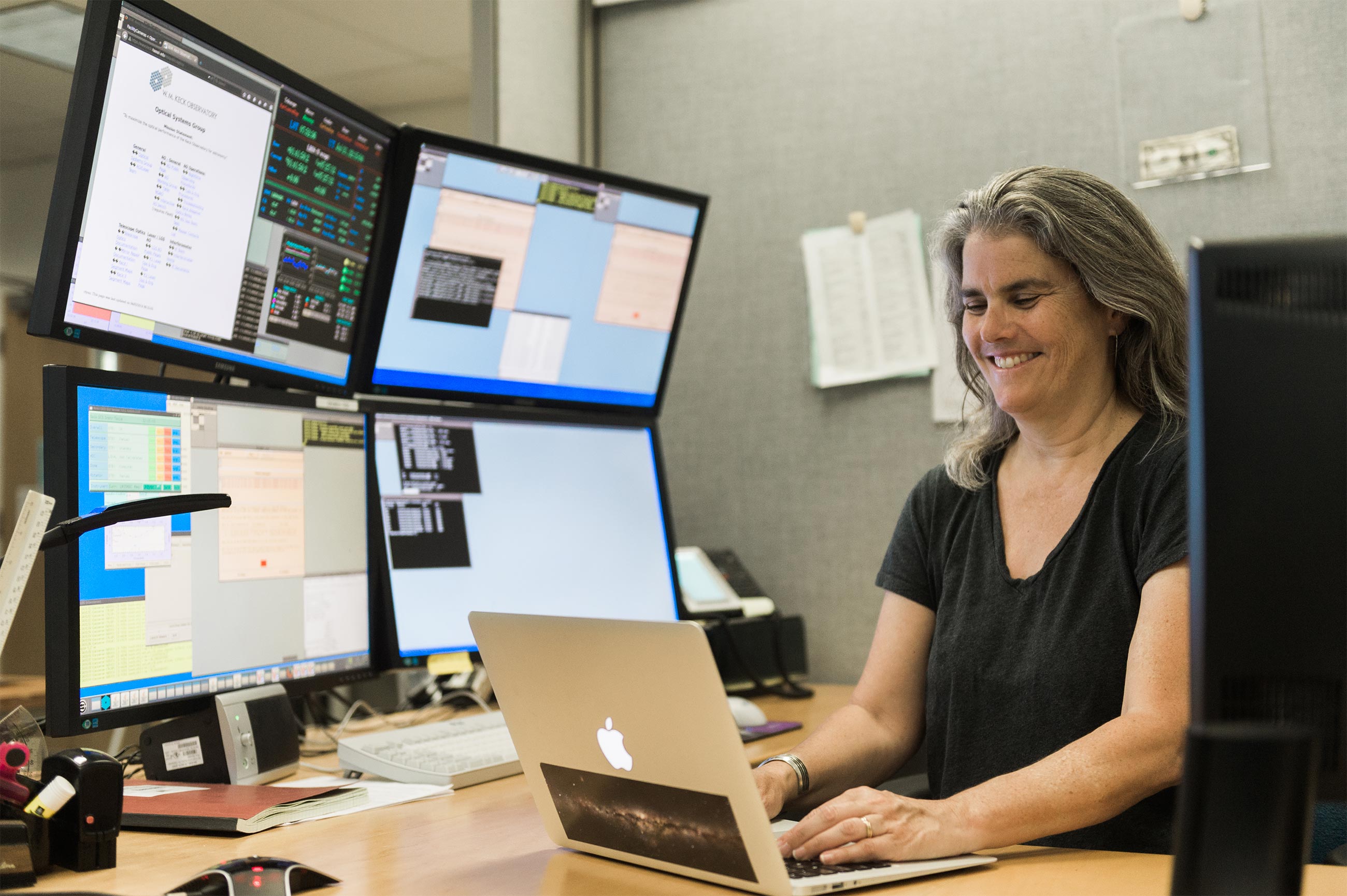
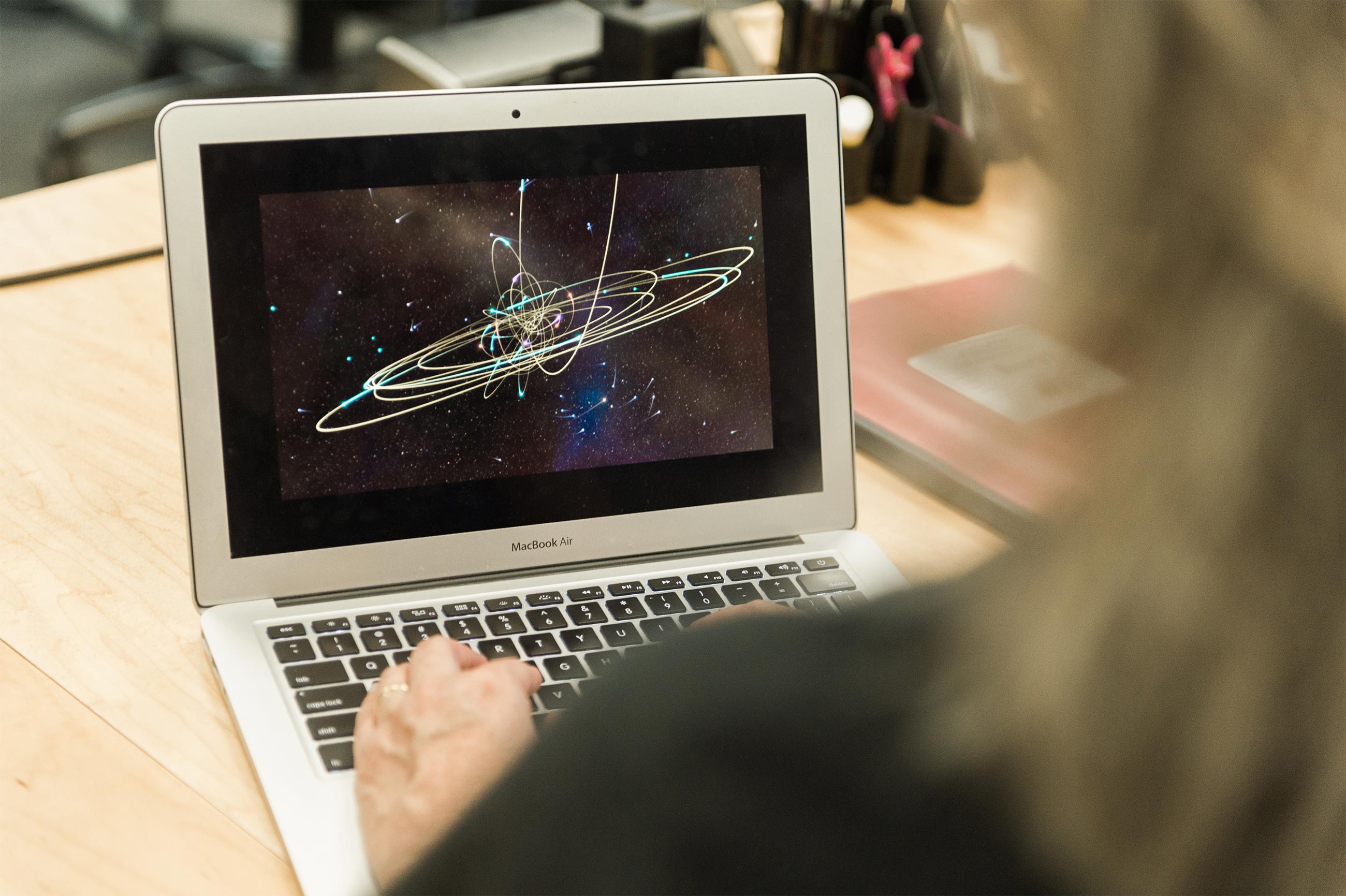
Ghez maps the movements of stars around the supermassive black hole at the galaxy’s center.
John Hook for Quanta Magazine
The supermassive black hole has been identified, but her explorations are far from over. Theories of galactic evolution suggest that the Milky Way’s center should have lots of old stars and almost no young stars. Observations show the opposite. Ghez’s group is also tracking a mysterious, glowing infrared blob called G2 that skimmed past the black hole in 2014. And now, using their decades-long data set, her team has begun testing whether the stars orbiting the black hole move according to the rules of Einstein’s general relativity or are subject to exotic deviations from theory.
Quanta caught up with Ghez to hear about these projects and her plans. The interview has been edited and condensed for clarity.
You use new telescope technology to address deep theoretical questions. Which one comes first for you: observation or theory?
I think that’s a great question about creativity and discovery. Like, how do you figure out your next project? For me, what floats my boat the most is to figure out new ways of seeing things; to reveal puzzles. What makes me happiest is when observations don’t make sense. And in order for observations to not make sense in a new way — in other words to not be doing incremental work — you need to be looking in a way that’s different.
Your team and Reinhard Genzel’s group disagreed about how to interpret the observations of G2. They thought it was a gas cloud; your group suggested it was a star. Can you walk us through what happened when it passed the black hole in 2014?
I was pretty convinced that you could explain this object with a model in which you said the object was actually intrinsically a star. One of the key determinants of whether it was a pure gas cloud or a star was whether or not it survived closest approach in 2014. It happily survived.
The interpretation that I am most intrigued by is the idea that you are seeing an object that began its life as a binary star. And if you put very close binaries near a black hole, it turns out to induce what’s known as a three-body interaction, and the binary can merge. So black holes can drive binaries to merge more quickly than they would anywhere else in our galaxy. You end up with an object that has the characteristics of what we are looking at.
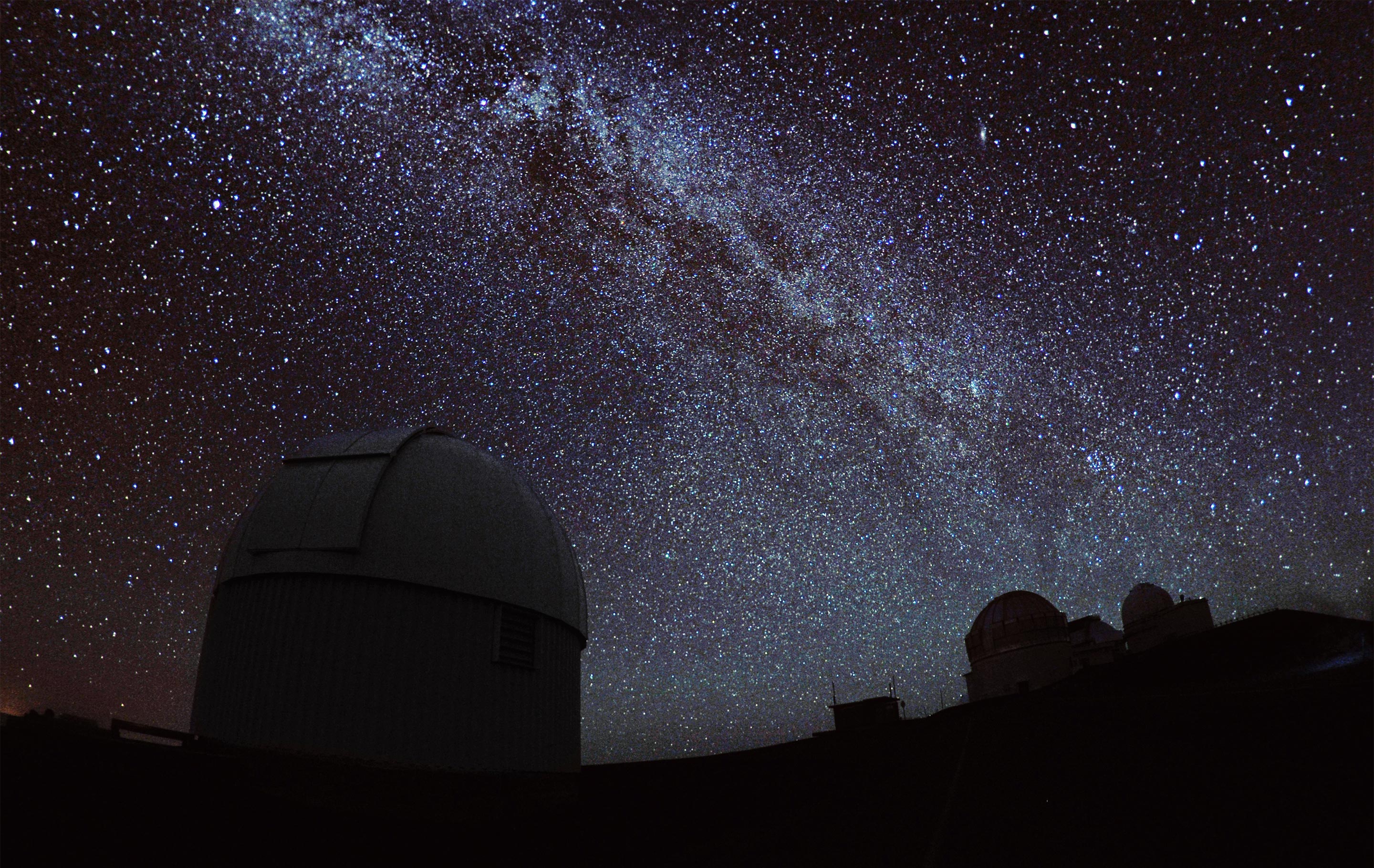
Observatories atop Mauna Kea.
John Hook for Quanta Magazine
It also explains some of the unusual observations of the center of the galaxy. We see many young stars at the center of the galaxy that are hard to explain. It turns out that when binaries merge, it’s like resetting the clock; you get a rebirth of a star, so to speak. So it will create an excess of apparently young stars really close to the black hole, and that’s exactly what we see.
And then after we got very excited about this whole business of binaries, the detection [of gravitational waves from a black-hole merger] happened. In fact, if you take this scenario that we’re developing, where G2 at the galactic center is a binary, it actually gives a mechanism for very naturally explaining these events.
You’re referring to the fact that the Laser Interferometer Gravitational-Wave Observatory (LIGO) found black holes of around 30 times the mass of the sun, which is heavier than astronomers expected?
If you took two stellar-mass black holes that are the mass that we anticipated, which is 10 times the mass of the sun rather than the 30 that is being observed, and put them near a supermassive black hole, then the two would merge to become a 20 solar mass black hole. And if you do this successively you can work your way up to the 30 solar mass number.
Again, we always start with what’s simple, and then the observations often lay out a more complicated picture. But today, the standard picture is that most if not all galaxies harbor supermassive black holes, so if you think they can play an important role in terms of driving binary stars to merge, then you need to think about that in terms of understanding LIGO. So I think G2 has this really interesting connection — potentially, let me really emphasize potential, as this just an idea we’re playing with — but it has a lot of nice attributes of being very consistent with what we know today about the universe and the center of our galaxy specifically.
By which you mean the young stars in the galactic center, and the LIGO observations?
Right. There’s a third mystery that may be a bit of a stretch. We anticipate that the population of old stars should be greater near the black hole. And yet we actually don’t see that. There are all sorts of different explanations, from all different camps, but one camp is that the old stars that you are looking at have envelopes that are a little fluffy. If you think that binary stars are being driven to merge, before they merge the binaries might strip these old stars of their outer envelopes. That would make them fainter than you expect them to be, so the lack of old stars might just be an observational outcome of this binary process. Again — when you line up all your mysteries, you have to ask, well, what’s the missing element? What am I not seeing?
You have started testing general relativity around the supermassive black hole, and you haven’t found any deviations yet from Einstein’s predictions. What are your plans for this project?
In 2018, the star that is the strongest probe of the gravity around the black hole, S02, will make its next closest approach. And it will be the first time we have enough of a handle on its orbit for that closest passage to probe the laws of gravity. In the space of a month or so its velocity will change by more than 6,000 kilometers per second. That’s what will enable us to test general relativity.
Speaking of improvements in technology, you were until recently on the science advisory committee of the Thirty Meter Telescope (TMT), which is expected to be the world’s most powerful ground-based telescope. The observatory was planned for Mauna Kea, but the Hawaiian Sovereignty Movement considers that mountain a sacred place and is opposing the project. Spain’s Canary Islands have been chosen as a backup location. If TMT doesn’t go up on Mauna Kea, how does that affect your studies of the galactic center?
Oh, you know, that’s such a can of worms. Let me tell you a side story before we get into this more political stuff.
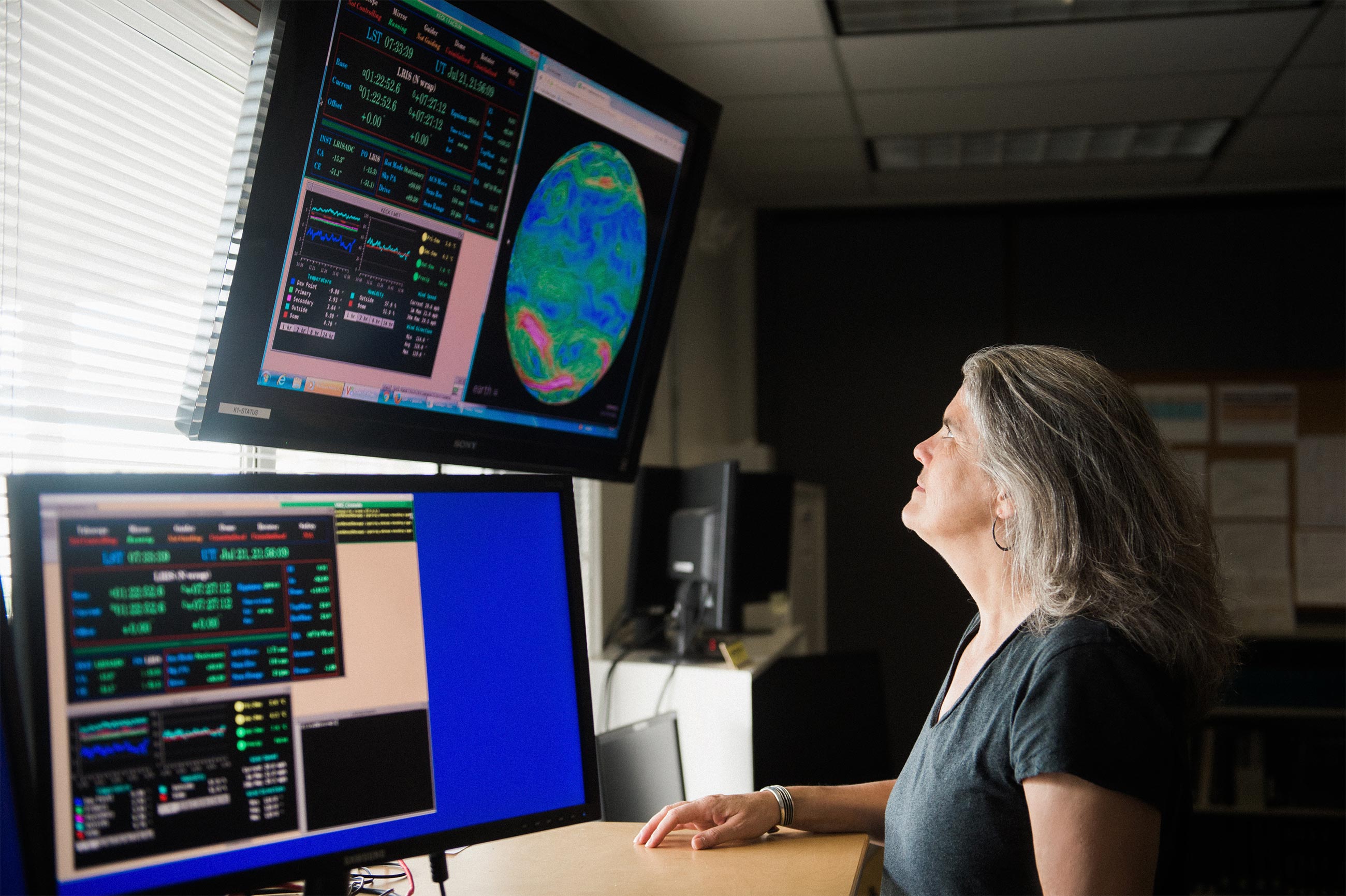
Ghez checks the weather before that night’s observations.
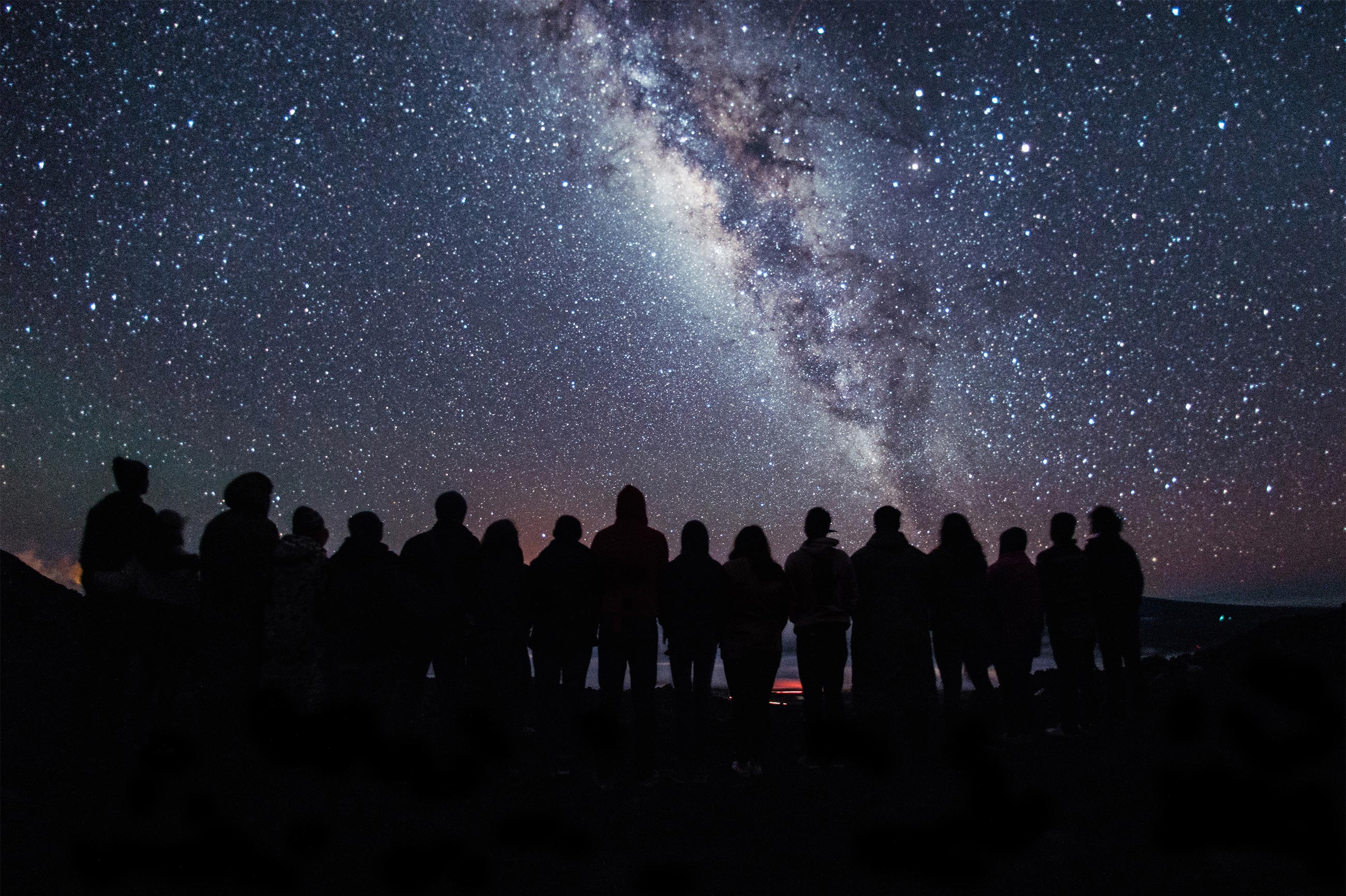
Members of Ghez’s Galactic Center Group atop Mauna Kea.
Ghez checks the weather before that night’s observations (left). Members of Ghez’s Galactic Center Group atop Mauna Kea.
John Hook for Quanta Magazine
Today, all these weird phenomena that we see — like G2, and the young stars where there should be none, and not enough old stars — you’re really only looking at the brightest stars. So, in order to truly understand the population, you really need to see the typical star, because most stars are low mass or faint. So as we improve our technology both in terms of adaptive optics and going to larger telescopes, it allows you to see a typical star like the sun.
In addition, not only would better resolution let you probe gravity with better measurements of the stellar orbits, but you can increase your understanding of how black holes impact the evolution of a galaxy. And this effect is a key parameter of all cosmological models. You want to be able to see not just the tip of the iceberg in terms of the stellar population.
OK, so then let’s tackle this TMT story. I was on the TMT science advisory committee for, I don’t know, 13 years. The thing that is important is that you get a site where adaptive optics works really well. That means that you want a very smooth airflow over the site where your telescope is at; you want to be on a mountain that is surrounded by a body of water. So you always see observatories near water. Hawaii is surrounded by water, and the Canary Islands are surrounded by water, as opposed to having just water on one side. That makes for much smoother airflows. So I think that the alternative site has some interesting characteristics. Without being — can you tell my angst about talking about this?
Yes, sorry to put you on the spot. But I had to, because it’s very interesting.
It’s a very interesting story that goes so far beyond science. If it were only a scientific decision, today, Mauna Kea would be my preference. It’s what we chose, so we chose it for a reason. It’s a great site from the point of view of performance of adaptive optics. From my biased perspective, it’s also farther south, so it’s easier to see the center of the galaxy. But one has to be totally respectful of the cultural issues associated with Mauna Kea. It’s one thing to be an astronomer over on the mainland thinking and looking at this, but when you go over there, you understand that it’s a much more complex issue.
I hope for the sake of science, and also for the sake of bringing science and technology to the state of Hawaii, that this project can continue. But it has to continue in a way that works for all the players. And I think the issues have risen far above the issues of astronomy.
This article was reprinted on TheAtlantic.com.




